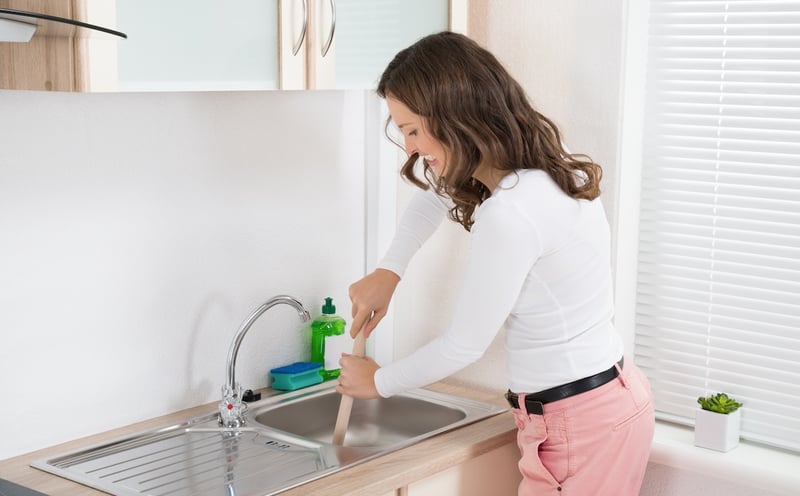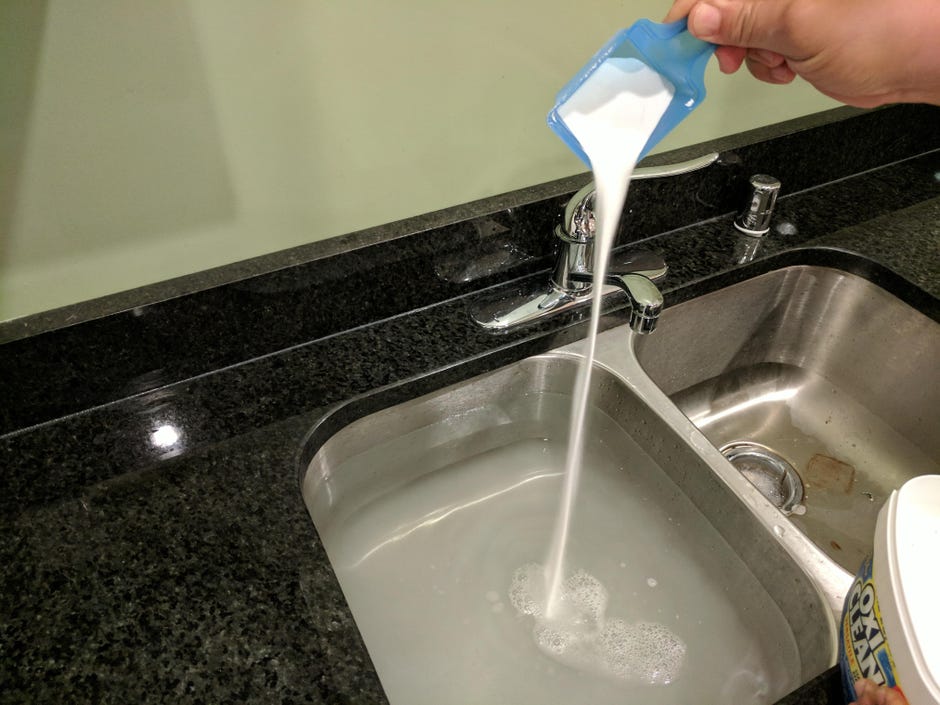Waterlogged And Wondering Why - 6 Causes For Your Kitchen Sink's Slow Drain
Waterlogged And Wondering Why - 6 Causes For Your Kitchen Sink's Slow Drain
Blog Article
Everyone will have their own unique perception in relation to Why Is My Sink Not Draining?.

It's not normal for your cooking area sink to congest multiple times in one month. If your sink obstructs two times a week, there's some difficulty going on.
A blocked cooking area drain doesn't simply reduce your duties, it degrades your whole plumbing system, gradually. Here are some common behaviors that motivate sink blockages, and also exactly how to avoid them.
You require appropriate waste disposal
Reusing waste is excellent, but do you take notice of your natural waste too? Your cooking area must have two different waste boxes; one for recyclable plastics as well as another for natural waste, which can end up being compost.
Having actually a designated trash can will certainly assist you and your family stay clear of throwing pasta and various other food remnants down the drain. Commonly, these remnants absorb dampness as well as become obstructions.
Somebody tried to clean their hair in the kitchen area sink
There's a right time and also place for everything. The kitchen area sink is just not the ideal location to clean your hair. Washing your hair in the cooking area sink will make it block sooner or later unless you utilize a drainpipe catcher.
While a drain catcher could catch a lot of the fallouts, some hairs might still make it through. If you have thick hair, this might be enough to reduce your drainage as well as eventually develop an obstruction.
You're throwing coffee away
Used coffee grounds as well as coffee beans still soak up a substantial amount of wetness. They might seem small adequate to throw down the drain, however as time takes place they begin to swell as well as occupy more area.
Your coffee premises should go into natural garbage disposal. Whatever fraction gets away (probably while you're washing up) will be cared for throughout your monthly clean-up.
You have actually been consuming a lot of greasy foods
Your kitchen sink may still get blocked despite natural garbage disposal. This might be due to the fact that you have a diet regimen abundant in greasy foods like cheeseburgers.
This grease coats the insides of pipelines, making them narrower and also even more clog-prone.
Your pipe wasn't repaired appropriately to begin with
If you have actually been doing none of the above, yet still obtain regular obstructions in your kitchen sink, you should call a plumber. There might be a problem with how your pipelines were mounted.
While your plumber gets here, check for any type of leaks or irregularities around your kitchen pipes. Don't attempt to fix the pipes on your own. This might create a crash or a cooking area flood.
There's more dirt than your pipes can handle
If you get fruits straight from a ranch, you might discover more cooking area dust than other people that shop from a shopping mall. You can conveniently fix this by cleaning the fruits and also veggies effectively before bringing them into your home.
Melt the sludge
The mistake isn't from your kitchen area sink in any way
Possibly the trouble isn't from your kitchen sink, but the entire drainage system. In such a case, you may discover that other sinks and drains get clogged every other week. You need a professional plumbing service to fix this.
My Kitchen Sink Won’t Drain - What Should I Do?
If Your Sink Has a Garbage Disposal...
Turn on the disposal. If the disposal hums and doesn’t turn, then there’s clog in the disposal unit. Go to your circuit breaker panel, and switch off the circuit breaker to your garbage disposal. Back in your kitchen, double-check that your garbage disposal is off by trying to turn it on. The disposal should not move, and it should not make any noise. Lie down underneath your sink so that you can see and access the bottom of the disposal unit. Look for a hole that looks like the head of a hex-head bolt in the center of the unit. Place an Allen wrench inside this hole and turn it from side to side until you feel a decrease in resistance and are able to rotate the wrench completely in a single direction. This action rotates your disposal’s blade manually. Put the wrench aside, and press the disposal unit’s reset button or switch. Flip your garbage disposal’s circuit breaker switch back on, and turn on the unit to see if the obstruction has cleared. If it hasn’t, repeat the steps above until the obstruction is removed. How to Unclog a Kitchen Sink Drain
If you have a double bowl sink, seal one side of the sink with an airtight lid or a second plunger before plunging the other side. Otherwise, you won’t be able to create adequate suction. Place the cup of the plunger completely over the drain opening. Turn on the faucet, and let the water run until it completely covers the cup of the plunger. Start plunging by pushing the plunger down and pulling up again in order to build up suction. Make sure that the edges of the plunger stay in contact with your sink, or else you’ll lose the suction. If you have trouble forming a seal between your sink and plunger, add petroleum jelly to the mouth of your plunger, and try again. Plunge about five or six times before removing the plunger to see if water starts to drain properly. In some cases, you’ll even be able to feel the clog become dislodged while you plunge because suddenly there will be much less resistance. Repeat the plunging process until the clog clears. Once water is draining properly again, run hot water down the drain for 5 minutes to help clear away grease, grime, and debris from the clog. https://www.plumbingjoint.com/blog/2019/august/my-kitchen-sink-won-t-drain-what-should-i-do-/

I hope you liked our post on Why Is My Sink Not Draining?. Thanks a ton for taking a few minutes to read our piece of content. For those who enjoyed our blog post please be sure to pass it around. Many thanks for going through it.
Free Estimates
Report this page